Introducción
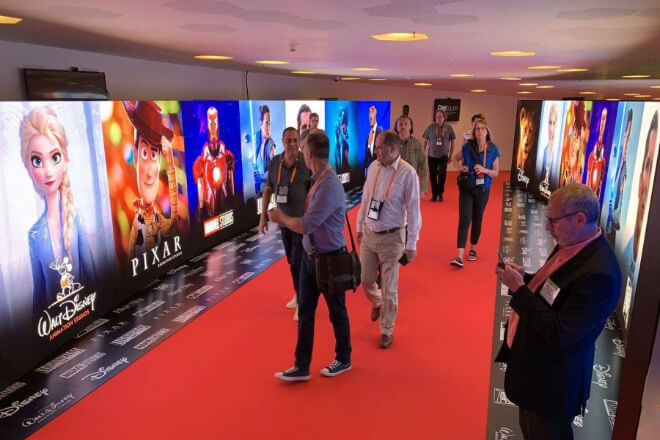
pantallas led are becoming increasingly common at various cultural festivals. They not only attract audience attention but also convey information, create atmosphere, and even become a vital tool for creative expression.
Next, let’s take a look at why LED screens are so popular, what are their strengths, and which events have particularly well-suited them.
Tabla de contenido
1. What are the advantages of LED screens at cultural festivals?
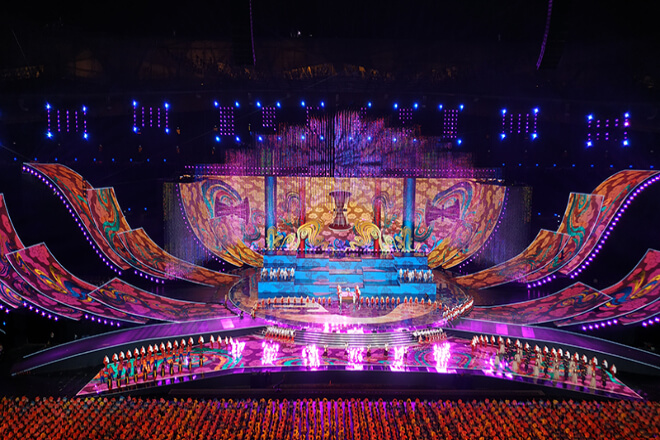
At festivals, capturing the audience’s attention at first glance is crucial. LED screens, with their large size, high-definition image quality, and vibrant colours, can instantly catch the eye.
For example, at a music festival’s main escenario, a massive LED screen, combined with lights and smoke, instantly ignites the stage, allowing even those standing in the last row to clearly see the performers’ movements.
For example, the Strawberry Music Festival frequently uses LED screens to create a sci-fi-inspired stage design, making the audience feel as if they’ve stepped into a futuristic world.
At the Dubai Light Festival, LED screens showcased artists’ creative works, bringing the entire city to life, with visitors stopping to take photos.
At an event, the speed of information delivery directly impacts the audience experience.
LED displays can update program schedules, guest introductions, and even last-minute announcements in real time.
They can also present images using video, graphics, and animation, making them more intuitive than traditional posters and announcements.
At New Year’s Eve parties, audience messages instantly appear on the screen, and interactive raffles and sponsor advertisements run simultaneously, creating a sense of engagement.
This sense of immediacy and interactivity simply cannot be achieved with print promotions.
The atmosphere of festive events often relies on visuals and emotions, and LED displays can easily help achieve this.
They can change images, colours, and dynamic effects based on the festival or theme, allowing people to capture the atmosphere the moment they enter.
During the Spring Festival, red lanterns, fireworks, and dragon and lion dances on the screen create a festive atmosphere.
At Christmas, falling snow, Christmas trees, and reindeer animations instantly bring people into a cosy mood.
At Halloween parties, LED displays simulate the lighting and shadows of a haunted house, creating a thrilling and exciting atmosphere that enhances the party atmosphere.
LED screens are not only information display tools but also creative tools. They can be combined with lighting, choreography, and even mechanical stages to instantly elevate the stage effect.
In concerts or immersive exhibiciones, LED screens can create three-dimensional stages and dynamic scenes, helping artists realise a variety of creative ideas.
For example, Korean K-pop concerts used spliced LED screens to create a three-dimensional stage, stunning the audience from every angle.
At the opening ceremony of the Tokyo Olympics, LED screens combined with mechanical stages created a high-tech visual show that captivated audiences around the world.
2. Why Cultural Festivals Prefer LED Screens
| Comparison | Traditional Method | LED Display (Advantage) |
|---|---|---|
| Banners / Posters | Low cost, but once printed content is fixed; requires reprinting for changes. Hard to read details from a distance in crowded venues. | Content can be updated anytime; supports video, animation, and scrolling text; grabs attention easily and replaces multiple static signs. |
| Projectors / LCD Screens | Projectors work in dark areas but images fade in daylight; LCD screens have good quality but limited size, not suitable for covering large stages or plazas. | Supports ultra-large sizes with bright, clear images; visible day or night; ideal for main stage backdrops at large festivals or ceremonies. |
| Traditional Stage Sets / Lighting | Create atmosphere but fixed content, hard to change; takes up space and switching themes is complicated. | Backgrounds, colors, and effects can switch instantly; supports interactive content; adapts with performance rhythm for more dynamic and immersive experiences. |
1) Compared to Traditional Banners and Posters
Banners and posters are less expensive, but once printed, the message is fixed; changes require reprinting. Moreover, in crowded venues, people at a distance can hardly see the details.
In contrast, LED screens offer much more flexibility. Content can be changed at any time, with videos, animations, and flashing text, instantly capturing attention.
For example, at a square festival, a single LED screen can display the event schedule, introduce performers.
And scroll sponsor advertisements, easily accomplishing what multiple banners would otherwise require.
2) Compared to Projectors and LCD Screens
While projectors can magnify images, they can be blurry in bright sunlight or bright lighting. LCD screens offer excellent image quality, but they are often too small to cover the entire escenario or square.
LED screens, on the other hand, can be made extremely large, with bright and clear images, regardless of lighting conditions day or night.
This is why large-scale music festivals, carnivals, and opening ceremonies almost always choose LED screens for the main stage background and information displays.
3) Compared to Traditional Stage Sets and Lighting
Traditional stage sets and lighting can certainly create atmosphere, but scene changes are cumbersome, content is fixed, and they take up a lot of space.
LED screens offer far greater flexibility, allowing for the ability to change background images, colours, and special effects at any time, and they can also host interactive content.
For example, during the Spring Festival Gala, the screens can display both paper-cut animations and dragon and lion dances, with the images shifting in time with the performances.
At the Brazilian Carnival, LED screens shimmer with colour in sync with the dance and music, instantly bringing the stage to life. This effect is impossible with traditional backdrops and lighting.
3. Which LED displays are suitable for cultural festivals?
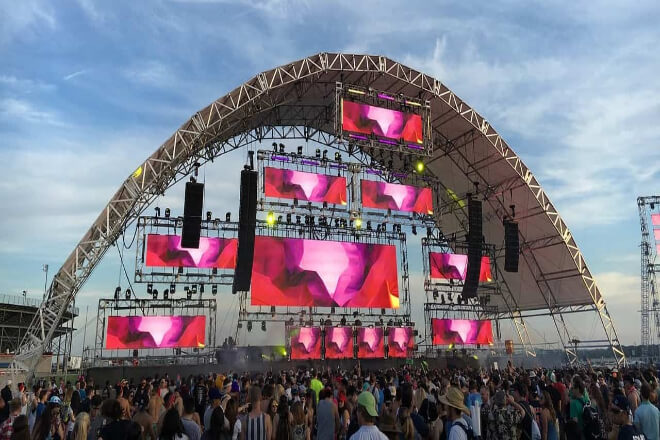
1) Outdoor Full-Colour LED Screens
The biggest advantage of outdoor full-color LED screens is their high brillo and durability. They are weatherproof and can operate even in rainy days.
These screens are particularly well-suited for large-scale music festivals, square celebrations, and street festivals.
They not only display images clearly and vibrantly, but also remain visible from a distance.
For example, the annual outdoor New Year’s Eve gala features a massive full-colour LED screen.
It not only serves as the main stage backdrop but also displays interactive live information and sponsor advertisements, making it both aesthetically pleasing and practical.
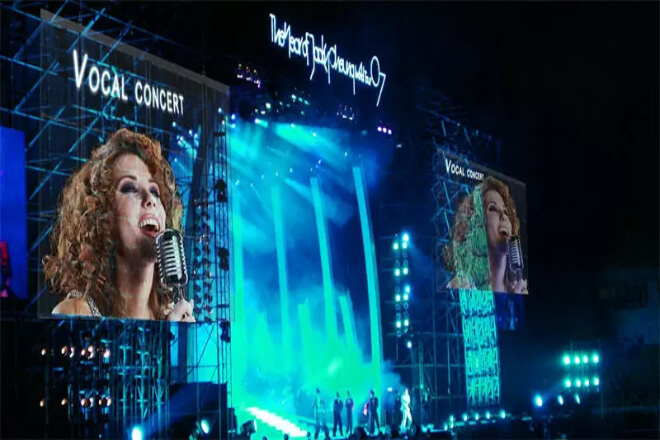
The cool thing about transparent LED screens is that they allow for a visible background.
They can be embedded in glass or stage fixtures, so the display doesn’t obstruct the view behind them. This makes them ideal for cultural exhibitions or shopping mall festivals.
These screens can display dynamic content without overwhelming the space. For example, during a Christmas event at a shopping mall.
A transparent LED screen embedded in the window displayed a falling snow animation, which drew passersby to stop and take photos, instantly livening up the atmosphere.
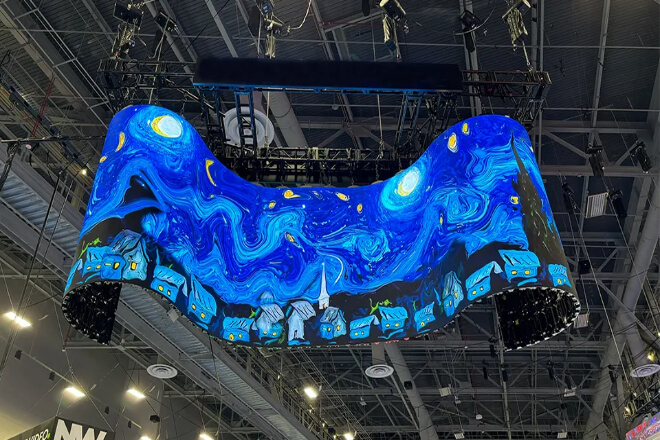
3) 3D or Wraparound LED Screens
3D or wraparound LED screens can be assembled into cubes, cylinders, or rings, offering a 360° display that is equally stunning from any angle.
This type of screen is ideal for immersive exhibitions or themed parties, allowing visitors to fully immerse themselves in the scene.
For example, some technology exhibitions use wraparound LED screens, transforming the entire room into an animated world. Entering the room feels like entering a story, creating a truly immersive experience.
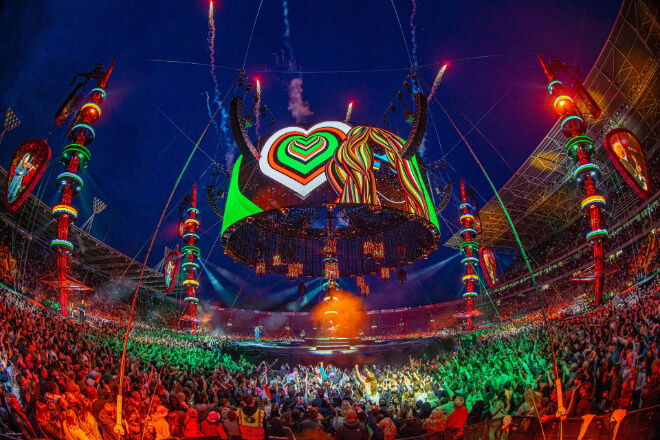
Small-pitch LED screens offer exceptionally detailed image quality, making them ideal for close viewing.
Whether used for small indoor stages, art exhibitions, or cultural displays, they deliver high-quality images.
Viewers can see every detail even when they get close to the screen, eliminating blur.
For example, in interactive exhibition areas, small-pitch LED screens display high-definition animations or video guides, allowing visitors to closely examine every detail of the work, enhancing the experience.
4. Case Study of LED Display Screens in Cultural Festivals
1). Opening Ceremony of the Cannes Film Festival in France
At major international festivals, LED screens have become an integral part of the stage and atmosphere.
For example, at the Cannes Film Festival opening ceremony, the LED screen behind the main stage not only displayed movie posters and clips from the opening film but also featured dynamic visual effects and interactive lighting.
Seamlessly integrating with the red carpet and performances, elevating the entire opening ceremony to a new level of grandeur.
The screens provided an immersive visual experience for the audience and media, enhancing the visual impact of the program.
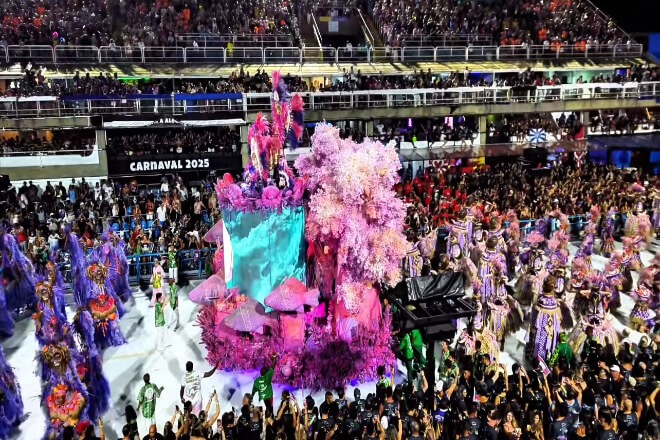
2) Brazilian Carnival
Looking at the Brazilian Carnival, these large street festivals boast spacious venues and dense crowds.
Large LED screens beside the main stage and parade not only broadcast live performances but also displayed dancers’ movements, background animations.
And festival-themed information, allowing audiences at a distance to clearly follow the performances.
The dynamic displays on the LED screens, combined with the rhythm of the music and stage lighting, greatly enhanced the visual appeal and audience participation of the event, making the carnival more lively and vibrant.
3) Chinese Spring Festival Gala
In China, LED screens also play a vital role in festivals. Taking the Spring Festival Gala as an example.
The giant LED screens on stage not only display animations and backgrounds but also incorporate elements of traditional Chinese culture.
These elements, such as paper-cutting, Peking Opera facial makeup, and dragon and lion dances, seamlessly blend modern technology with traditional culture.
The LED screens allow audiences not only to enjoy the performances but also to experience the rich festive atmosphere and cultural heritage.
5. Conclusión
Overall, LED screens have truly performed exceptionally well in cultural festivals. They not only enhance the visual appeal of events but also enrich the audience experience.
We hope this article helps you better understand the appeal of LED screens, and we look forward to seeing them bring exciting visual experiences to even more events in the future.
Por último, para obtener más información sobre las pantallas LED, por favor contáctenos.
